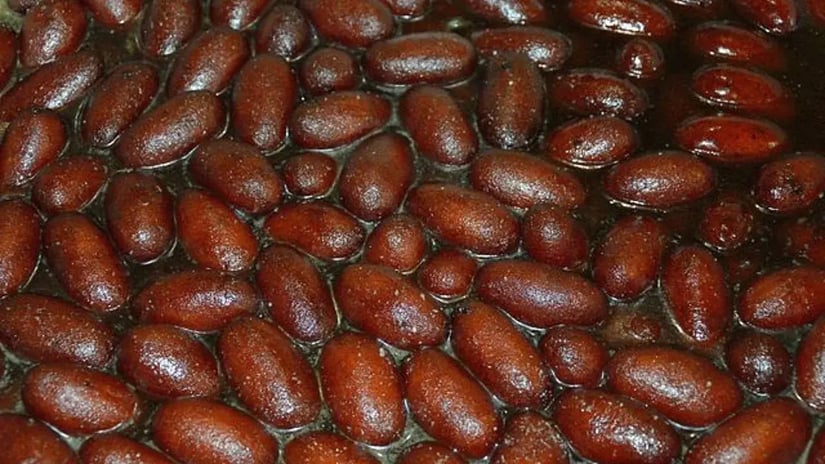- Home
- Articles
- Peek Into History: Shaktigarh’s Lyangcha, Its Maker and Its Connection to Bengal’s Lost Royalty
It is an interesting story as the massive-sized lyangcha’s are mostly made in Burdwan where the inventor intrinsically linked two, then villages, of Bengal.
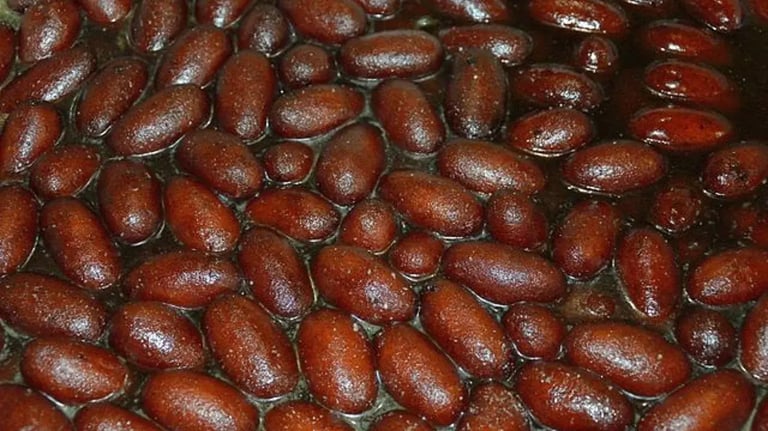
Like most sweets of Bengal that were born like a diamond in the heart of the earth – under pressure and with just the right conditions, Lyangcha or Langcha has a similar tale. It finds itself amongst the revered sweets of Bengal that were invented to entertain or prank guests and like the rest was born when royalty was still a thing in India, and not reduced to being a titular head. This sweet enjoys quite some fame in the country, especially in the eastern part of India and Bangladesh. When one talks about Langcha, one has to mention Shaktigarh, Burdwan which is the hometown of the beloved sugar-syrup-soaked mishti. But before that what exactly is this indian sweet recipe and how does it taste?
What is Langcha?
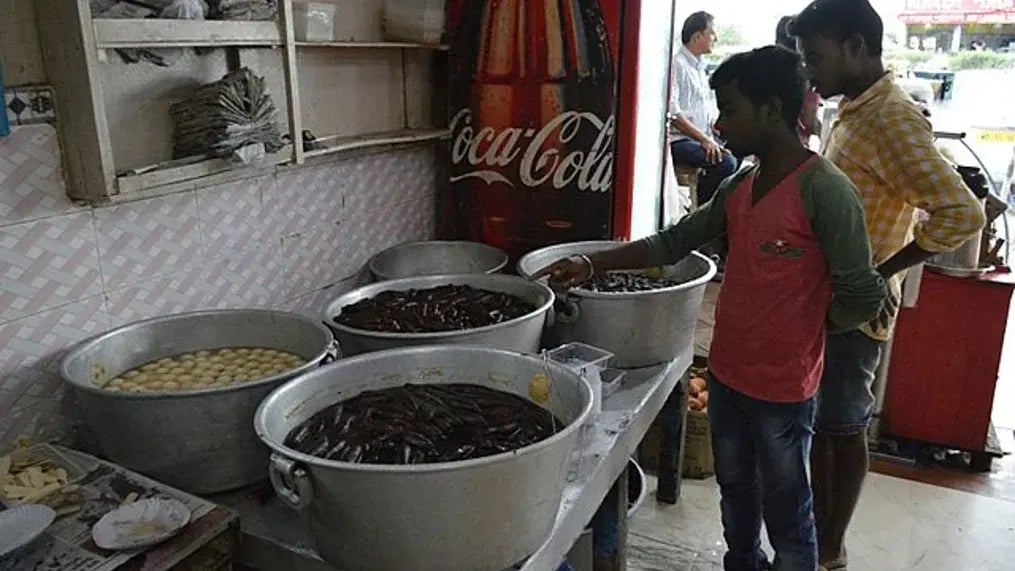
Just like some sweets in Bengal, Lyangcha is made from khoya, or Mawa, a kind of milk product that is obtained after simmering milk for a long time to evaporate the water from it, leaving behind milk solids. Mawa is a rarity in Bengal so sometimes milk powder is substituted for it.
In such cases, flour and milk powder (evaporated milk) are combined with soda water to make a dough with ghee also incorporated to make it fragrant and soft. It's left to rest for a couple of hours and then shaped into elongated ovals, or mini cylinders, by hand and released into a vat of oil to be fried until a deep shade of brown encases the soft, cooked dough inside.
Once the crust sits like a proper rind around the core, it is taken out from the kadhai where it is fried to be transferred to another kadhai filled with bubbling sugar syrup. They stay in the hot sugar syrup until the whole sweet has soaked the syrup. The sugary langcha then goes into a vat filled with normal temperature infused sugar syrup, either rose or cardamon flavoured and then left to soften for a few hours, then sold with the syrup to waiting customers. The sizes vary and different places serve different langcha that could measure up to the size of a pam or even an astounding 1 foot.
The Origin
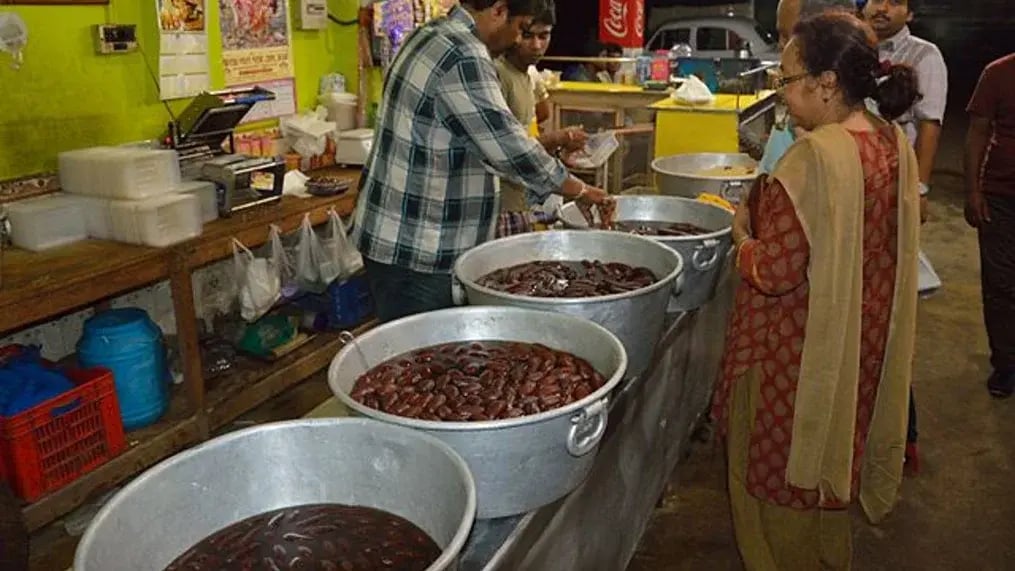
The story of this sweet is well documented by a Bengali writer called Narayan Sanyal in his book Roopmanjari. While the sweet might be connected to Burdwan’s Shaktigarh, it has a long history that links its birthplace to Krishnanagar, Nadia, as to how Shaktigarh earned the fame is a tale of a leper who was fond of making sweets and a royal home, and dates back to the 1890s.
The story goes thus, King Krishnachandra Ray’s daughter of the royal family of Krishnanagar, married the prince, the son of the King of Burdwan. Upon conceiving, the princess was brought back home by her father King Krishnachandra Ray. She had begun to lose her appetite randomly and worried for his child, the King sought medical intervention for his daughter to no avail.
After a long time, the princess broke her silence and desired to eat a mishti, that she recalled eating in Burdwan. It was the famed langcha that the princess could not name – a dark deep-fried sweet soaked in sugar syrup. But she did mention langcha because lyangcha in Bengali translates to leper. It was a sweetmaker from Burdwan who had created this sweet. She did however wrack her brains when her father was at his wit’s end and remembered the sweetmaker (locally called Moiras or Modaks) had a pronounced limp. The unnamed Moira was immediately summoned to Krishnanagar and asked to create this sweet for the princess. And lo and behold her appetite returned with gusto after her craving was fulfilled.
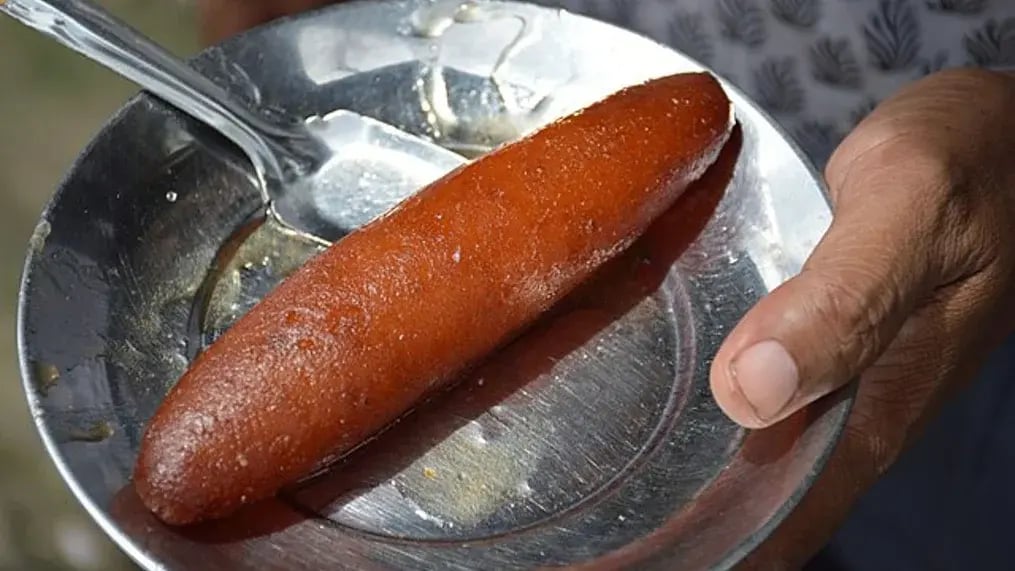
As for the sweetmeat maker, the “Lyangcha” had a dream, he travelled from Kalna, Purba Bardhaman district, to Shaktigarh to make the famous Ledikeni and Pantua. His name remains unknown, but he earned the infamous monicker for his physical deformity. When he was asked by the royal family about the name of the sweet, he decided to christen the sweet with what the princess called it i.e., Lyangcha. The sweetmeat maker was sent off to Shaktigarh, Burdwan post his duty, and gifted with land and properties so he could spend the rest of his life making sweets for the royal family.
Like This Article?
More Like This


Popular Articles



Trending Web Stories
Curated Recipes










